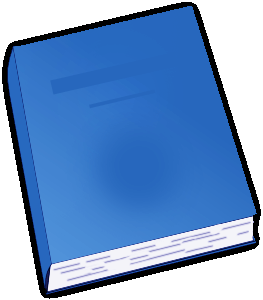Copyright Basics By: Library of Congress. Copyright Office |
|---|

Book Review
Copyright Basics is an indispensable resource for anyone seeking a comprehensive understanding of copyright law. Authored by the Library of Congress Copyright Office, this book serves as a concise and authoritative guide to navigating the complex landscape of intellectual property rights.
The book begins with a concise introduction to the history and purpose of copyright law in the United States. It then delves into the finer details of copyright registration, examining the requirements and procedures necessary to protect and enforce one's creative works. The authors successfully break down complex legal jargon into easily digestible segments, making the content approachable for both legal professionals and laypersons alike.
One of the book's notable strengths is its comprehensive coverage of different types of works eligible for copyright protection. From music and literature to original designs and computer software, the authors provide clear explanations of how copyright law applies to each category. Furthermore, Copyright Basics addresses the challenges posed by emerging digital technologies, offering insight into the rapidly evolving aspects of copyright in the digital age.
A highlight of this book is its inclusion of practical examples and case studies that help elucidate the intricacies of copyright law. By incorporating real-life scenarios, the authors effectively illustrate how copyright principles are implemented in various contexts. This approach ensures that readers can grasp the relevance and implications of copyright law in everyday scenarios.
Despite its strengths, the book assumes a certain level of familiarity with legal concepts and terminology. While it endeavors to simplify the subject matter, readers without foundational knowledge may find themselves occasionally overwhelmed. Nonetheless, diligent readers who persevere will undoubtedly acquire a comprehensive understanding of the key aspects of copyright law.
In conclusion, Copyright Basics serves as an excellent educational tool for individuals seeking to comprehend the foundations of copyright law in the United States. The authoritative approach taken by the Library of Congress Copyright Office, coupled with the book's comprehensive coverage and practical examples, make it an invaluable resource for creators, legal professionals, and anyone interested in protecting their creative works. Whether you are an aspiring artist, writer, or musician, this book will undoubtedly equip you with the knowledge necessary to navigate the world of copyright and safeguard your intellectual property. U.S. Copyright Office Library of Congress Copyright Basics September 2000 Copyright Basics (See Format Note at end of document.) Table of Contents What Is Copyright? Who Can Claim Copyright Copyright and National Origin of the Work What Works Are Protected? What Is Not Protected by Copyright? How to Secure Copyright Publication Notice of Copyright Form of Notice for Visually Perceptible Copies Form of Notice for Phonorecords of Sound Recordings Position of Notice Publications Incorporating U.S. Government Works Unpublished Works Omission of Notice and Errors in Notice How Long Copyright Protection Endures Transfer of Copyright Termination of Transfers International Copyright Protection Copyright Registration Registration Procedures Original Registration Special Deposit Requirements Unpublished Collections Effective Date of Registration Corrections and Amplifications of Existing Registrations Mandatory Deposit for Works Published in the United States Use of Mandatory Deposit to Satisfy Registration Requirements Who May File an Application Form? Application Forms Fill in Forms Fees Search of Copyright Office Records For Further Information WHAT IS COPYRIGHT? Copyright is a form of protection provided by the laws of the United States (title 17, U... Continue reading book >>
|
| This book is in genre |
|---|
| Non-fiction |
| eBook links |
|---|
| Wikipedia – Library of Congress. Copyright Office |
| Wikipedia – Copyright Basics |
| eBook Downloads | |
|---|---|
|
ePUB eBook • iBooks for iPhone and iPad • Nook • Sony Reader |
Kindle eBook • Mobi file format for Kindle |
|
Read eBook • Load eBook in browser |
Text File eBook • Computers • Windows • Mac |
| Review this book |
|---|